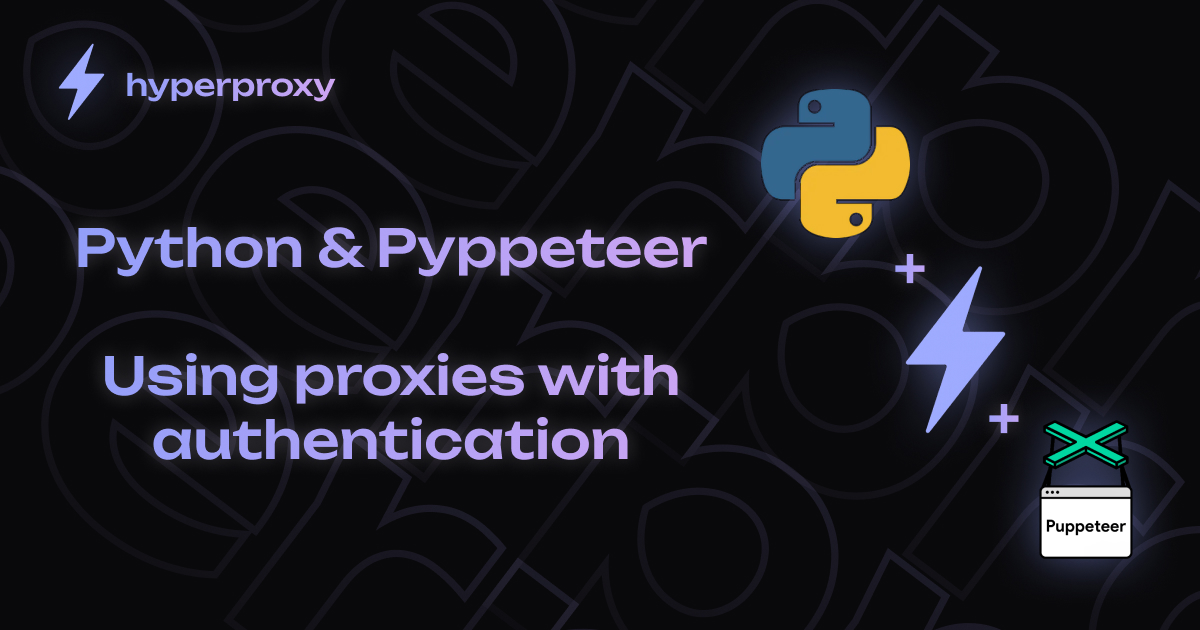How to Use HTTP Proxies with Authentication in Selenium
Struggling with proxy with auth Selenium? This comprehensive guide covers two foolproof methods:Selenium Wire proxies with auth and a Manifest V3 Chrome extension. Get your HTTP proxies with authworking in Selenium in minutes.
Prerequisites for Proxy Authentication in Selenium
- Python 3.7+
pip install selenium blinker==1.7.0 selenium-wire webdriver-manager- Chrome browser + ChromeDriver
Step 1: Define Your HTTP Proxy String
Store your proxy credentials in one variable for easy reuse:
# config.py - proxy with auth Selenium
PROXY = "pzAQ34:[email protected]:10878"Method 1: Selenium Wire Proxies with Auth
Selenium Wire proxies with auth simplifies proxy authentication in both Chrome and Firefox. It automatically injects your credentials.
from seleniumwire import webdriver
from selenium.webdriver.chrome.service import Service
from selenium.webdriver.chrome.options import Options
from webdriver_manager.chrome import ChromeDriverManager
import time
from config import PROXY
# Build the HTTP proxy URL
proxy_url = f"http://{PROXY}"
# Selenium Wire options for HTTP proxies with auth
driver_options = {
"proxy": {
"http": proxy_url,
"https": proxy_url,
"no_proxy": "localhost,127.0.0.1"
}
}
options = Options()
options.add_argument("--ignore-certificate-errors")
# Initialize webdriver with proxy auth support
driver = webdriver.Chrome(
service=Service(ChromeDriverManager().install()),
options=options,
seleniumwire_options=driver_options
)
driver.get("https://httpbin.org/ip")
print(driver.page_source) # Verify HTTP proxies with auth via Selenium
time.sleep(5)
driver.quit()Method 2: Manifest V3 Chrome Extension for Proxy Auth
Use a lightweight HTTP proxy with auth Selenium extension for full Chrome feature support (incognito, non-headless). Generates a Manifest V3 extension that handles onAuthRequired.
import os
import json
import zipfile
import time
from selenium import webdriver
from selenium.webdriver.chrome.options import Options
from selenium.webdriver.chrome.service import Service
from webdriver_manager.chrome import ChromeDriverManager
from config import PROXY
# Generate Manifest V3 Chrome extension for Selenium proxy auth
def create_proxy_extension_v3(proxy):
creds, hostport = proxy.split("@")
user, password = creds.split(":")
host, port = hostport.split(":")
manifest = {
"name": "Selenium Proxy Auth",
"version": "1.0",
"manifest_version": 3,
"permissions": ["proxy", "webRequest", "webRequestAuthProvider", "tabs", "storage"],
"host_permissions": ["<all_urls>"],
"background": {"service_worker": "background.js"},
"minimum_chrome_version": "108"
}
background_js = f'''chrome.proxy.settings.set({{
value: {{
mode: "fixed_servers",
rules: {{ singleProxy: {{ scheme: "http", host: "{host}", port: {port} }}, bypassList: ["localhost"] }}
}}, scope: "regular"
}}, () => {{}});
chrome.webRequest.onAuthRequired.addListener(
details => ({{ authCredentials: {{ username: "{user}", password: "{password}" }} }}),
{{ urls: ["<all_urls>"] }}, ["blocking"]
);'''
ext_dir = "proxy_ext_v3"
os.makedirs(ext_dir, exist_ok=True)
with open(os.path.join(ext_dir, "manifest.json"), "w") as m:
json.dump(manifest, m, indent=2)
with open(os.path.join(ext_dir, "background.js"), "w") as b:
b.write(background_js)
return ext_dir
# Build & load the extension
ext_folder = create_proxy_extension_v3(PROXY)
options = Options()
options.add_argument(f"--load-extension={os.path.abspath(ext_folder)}")
# Initialize WebDriver with the proxy extension
driver = webdriver.Chrome(
service=Service(ChromeDriverManager().install()),
options=options
)
driver.get("https://httpbin.org/ip")
print(driver.page_source) # Check proxy with auth in Selenium
time.sleep(5)
driver.quit()Best Practices & Tips
- Use proxy rotation: Avoid IP bans by cycling through a pool of authenticated proxies. Create a new WebDriver session per proxy to prevent reuse issues.
- Close drivers properly: Always call
driver.quit()to release system resources and kill orphaned processes. - Avoid headless detection: If using headless mode, add anti-detection flags like
--disable-blink-features=AutomationControlledand modify navigator variables. - Set explicit timeouts: Configure
driver.set_page_load_timeout()anddriver.implicitly_wait()to handle slow proxy responses without hanging the script. - Validate proxy IP: Use services like httpbin.org/ip or api.ipify.org to confirm the proxy is active.
- Use error handling: Wrap critical Selenium logic in
try/exceptblocks to catch proxy failures, timeouts, or authentication errors and retry as needed. - Keep ChromeDriver & Chrome in sync: Mismatches between Chrome and ChromeDriver versions are common causes of startup failures.
- Disable image loading for performance: Save bandwidth and load pages faster by disabling media using Chrome preferences when proxy bandwidth is limited.
Conclusion
Master proxy with auth Selenium with these two battle-tested methods. Whether you need quick setup via Selenium Wire proxies with auth or full-featured support with a Manifest V3 extension, you're covered.




